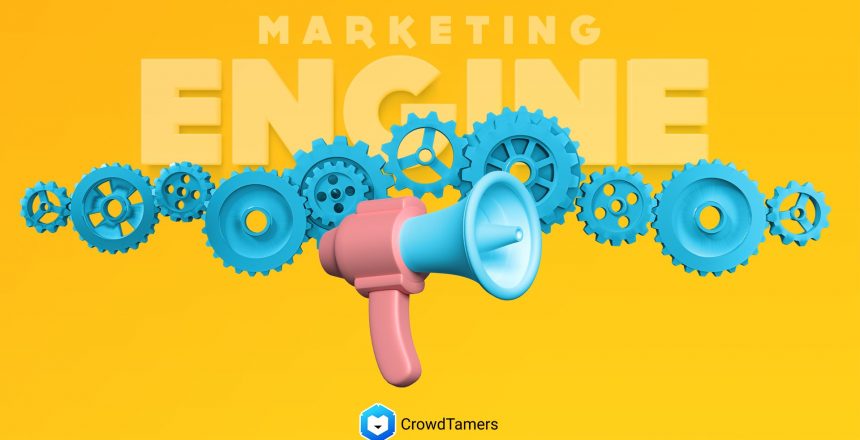The last post I wrote ended with:
You can boil good marketing down to 2 ideas: content and growth.
So let’s talk about those.
Content
Content starts with brand. Brand is a confusing idea. Many people think of brand as your logo and–maybe–your overall storytelling approach to marketing.
Brand, as I define it, is way more than that.
Brand is why you’re in business. It’s the substance of your interactions with your employees, your customers, and your competitors. If you haven’t defined that, well, you’re in some trouble.
But if I assume that you know 1) why you’re in business and 2) what makes you different than the competition, I can already say with some level of confidence that you have a theory for how your kind of business should be done. That needs to be key in everything you say.
That’s your content.
Content starts with a key idea. You need a unique thought that’s high value. It needs to be something other than the usual clickbait or list article.
Brian Dean of Backlinko talks about Skyscraper Content as a key winning differentiator for SEO, The idea there is something that stands out like a skyscraper among the houses: it’s 10x better than anything else written on the topic.
That’s a great approach to getting attention when you know what you want to say, but before you can do that you need to build a foundation of assumptions that you want to use to change the discussion in your space and then serve as a basis for further discussion.
You need to create rockbed content. Something that can serve as the base that you build a hundred further elements on top of. 2 or 3 really good pieces of rockbed content are enough to launch a whole career. Seth Godin’s Purple Cow and Tribes are two rockbed pieces of content. They are the basis for a whole series of videos, speaking engagements, books, webinars, and so on. But they’re fundamentally two simple ideas, well-phrased and evocative.
You need a couple of those.
But we’re not all as smart as Seth Godin, are we? Indeed, Seth writes a blog post every day and has done so for more than a decade. Over the years he’s had, probably, a dozen really good pieces of rockbed content. With those dozen really phenomenal, rockstar whizbang blow your socks off ideas, he’s become one of the best known marketers of today.
You only need a few great ideas to build from, but does it really take 3,000 swings to get 10 home runs?
Of course not, or I wouldn’t be writing this book. There’s an easier way to discover what your organization’s rockbed content should be than writing a blogpost every day for a decade.
Growth
15 years ago I was put in charge of a marketing team of 18 people at a small incubator in Orlando called Nextelligence. 5 months earlier, I’d been hired as their junior copywriter.
I had no idea what i was doing.
In charge of launching a startup every month or less, I proceeded to do everything wrong you can imagine that first month.
Press releases with misspelled headlines? Sure. I got called out by a major technology writer for that. Ad campaigns that took people to landing pages that didn’t exist? That, too.
I learned fast.
Once I got over the stupid mistakes, I started making better ones: Sending out emails that drove people to landing pages that didn’t quite match the email. Ad buys that weren’t optimized on date or demographic. I was groping my way to positive ROIs, but also realizing that there was a lot going on that no one seemed to have a good grasp on.
I kept asking questions of my team and the company and no one seemed to have good answers.
What kind of landing page performed better? How can we optimize checkouts? Can we make 2 versions of a user signup flow? Can we make 4?
All of this, I kept notes. I had a big honking spreadsheet with every marketing campaign, the result expected, the actual performance achieved, and my thoughts on it. No one taught me that, but I was doing what’s now called growth marketing. I called it “scientific marketing”. The idea behind it was simple:
Make a theory, test it, measure it, and then iterate.
This idea, at it’s core, is one of the big 3 rockbed ideas that I have about marketing. I only know 3 things in this business, and I’ve generated $20,000,000+ with them. The other two ideas? Maybe I’ll write about them someday, too. 🙂
The iterative approach to marketing works for any kind of marketing, including content. It tells you what performs with your audience. It tells you what makes them want to trust you.
And that’s what you need. You don’t want a piece of content that’s mildly interesting to your audience. You want content that leaps off the page, wrestles your audience into submission, and keeps their attention until you’re done with them.
How do you know when you’ve got that?
Write a piece of content, test its reception, measure it, and then iterate.
But if you don’t have traffic to your content right now, it can be really hard to figure out what kind of content resonates.
Fortunately, there are plenty of ways to get thousands of targeted readers / listeners / watchers of your content for just a few hundred bucks. Do that a dozen times and you’ll know what content resonates.
Then you develop that further, expand upon it, and before you know if you’ve found your rockbed to build your content machine on.
It’s not easy, but it is simple.



